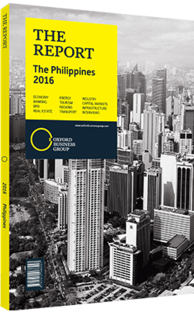Tirso G Santillan Jr, CEO, Alsons Consolidated Resources: Interview

Interview: Tirso G Santillan Jr
How will Mindanao bridge its power shortages, and will additional capacity meet new demands?
TIRSO G SANTILLAN JR: Mindanao has historically undergone shortages of power. Only recently has there been a significant drive for independent power producers (IPPs) to build their own power plants – mostly coal-fired or bunker diesel facilities – which are already in the process of being built or about to be commissioned. Should all this capacity be finalised, the region would appear to face an impending oversupply. However, given that it has experienced looming power interruptions and brownouts from 2010 to 2014, demand has been widely suppressed.
Once power becomes available – and all developments point to an upcoming scenario of stable supply for Mindanao – then suppressed demand will surge and take advantage of the new capacity. If one looks at the experience in the Visayas, when power plants were built over the past few years to offset shortages, there was a sudden surge of demand. For example, residential users would not purchase air conditioners and factories would not expand due to the limited supply. In the Visayas, there was a surge of power demand by up to 12%, which consumed the excess supply, leaving the region to needing to build additional power plants in 3-4 years.
What upcoming role will renewable energy play in the Mindanao power grid?
SANTILLAN: Mindanao is not well suited for wind power, due to low wind speeds in the region. After the awarding of the feed-in-tariff (FIT), there have been significant developments in solar power generation across the country. Sarangani, in Mindanao, offers the best site for this energy type as it has the longest sunshine in the archipelago. Although there are a number of prospective solar projects in Mindanao, they still need a FIT rate to make them viable. This is because the technology has not yet fully matured.
In terms of biomass, it would only be viable in areas where sources of feedstock are concentrated, for instance in Bukidnon, where sugar mills exist. Unless there is enough feedstock to support a biomass project in Mindanao – with sugar-cane tops in Mindanao being largely used for livestock – then biomass would not be entirely viable for the area.
Additionally, a significant potential source of power generation in the region comes from run-of-river hydroelectric power plants, where players with expertise in hydrology and water flow volumes can make projects of sizeable generating capacity.
In what ways can provincial power distribution be improved, and how can interconnection boost the attractiveness of the Mindanao power market?
SANTILLAN: Power generation in provincial areas must deal with cooperatives. One way to strengthen cooperatives would be by removing their political dimension – particularly how their board and management are elected, as their business model is different from the private sector’s approach.
In order to improve the cost of power in the Philippines, one would need to address the distribution system, as this cost element is usually forgotten. People mostly look at generation as the cost, but it is not the only one; there is also distribution and transmission. Transmission has been addressed through the privatisation of the grid to the National Grid Corporation of the Philippines, to ensure that it is well run, as the private sector looks after efficiency to generate profits. If one were to adapt the business model, we would convert the co-ops into corporations and privatise them as a means of improving their efficiency.
Alternatively, one could stimulate the consolidation of cooperatives, as many of the existing ones are small. The consolidation of cooperatives will drive their higher resources to enter the generation segment and operate at a higher efficiency.
You have reached the limit of premium articles you can view for free.
Choose from the options below to purchase print or digital editions of our Reports. You can also purchase a website subscription giving you unlimited access to all of our Reports online for 12 months.
If you have already purchased this Report or have a website subscription, please login to continue.

